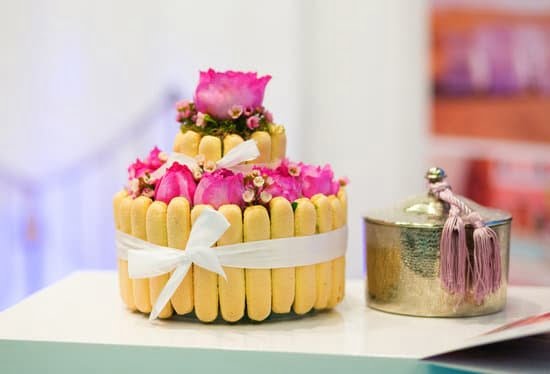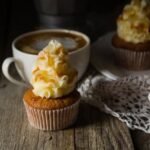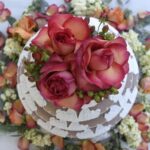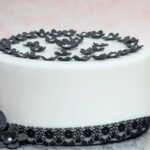The art of butter icing cake decoration is a skill that can transform a simple cake into a work of delicious and visually stunning art. Cake decoration has long been an important aspect of baking, as it not only adds beauty to the finished product but also enhances the overall taste and experience. In this section, we will explore the significance of cake decoration, as well as delve into the rich history and evolving techniques of butter icing cake decoration.
Cake decoration plays a crucial role in making any occasion feel special. Whether it’s a birthday celebration, wedding reception, or holiday gathering, a beautifully decorated cake becomes the centerpiece that captures everyone’s attention. Butter icing has become one of the most popular choices for cake decoration due to its versatility and ability to create intricate designs. From simple floral patterns to elaborate 3D sculptures, butter icing offers endless possibilities for creativity.
The history of butter icing cake decoration can be traced back centuries ago when sugar was first introduced as a luxury ingredient. Initially used as a simple coating or glaze, butter icing gradually evolved into intricate designs and decorations.
With advancements in baking techniques and innovations in piping tools, bakers began experimenting with different methods to create ornate patterns and textures on cakes. Today, butter icing has become an integral part of cake decorating traditions worldwide, constantly evolving with new trends and techniques.
In this article, we will explore all aspects of butter icing cake decoration – from the basics of making butter icing to advanced techniques for creating stunning designs. We will discuss the common ingredients used in butter icing recipes and provide step-by-step instructions on how to make perfect butter icing every time. We will also delve into the essential tools needed for cake decoration and highlight various techniques for achieving different design effects using buttericing.
So whether you are a baking enthusiast looking to enhance your skills or someone who simply enjoys admiring beautiful cakes, this article will surely inspire you to dive into the world of butter icing cake decoration. Get ready to unleash your creativity and elevate your cake decorating game with the art of butter icing.
The Basics of Butter Icing
Butter icing is a versatile and delicious frosting that can be used to decorate cakes in various styles. Before diving into the different techniques and designs, it’s important to understand the basics of butter icing.
Butter icing, also known as buttercream, is a type of frosting made from butter, sugar, and flavorings. It is creamy and smooth in texture, making it perfect for spreading or piping onto cakes. There are several variations of butter icing, each with its own unique characteristics.
The most common types of butter icing include American buttercream, Swiss meringue buttercream, and Italian meringue buttercream. American buttercream is made by creaming together softened butter with powdered sugar and vanilla extract. It has a rich and sweet flavor with a slightly gritty texture.
Swiss meringue buttercream involves whipping egg whites and sugar over a hot water bath until they reach a specific temperature. This mixture is then whipped until stiff peaks form before adding softened butter and flavorings. Swiss meringue buttercream has a silky smooth texture and is less sweet compared to American buttercream.
Italian meringue buttercream follows a similar process as Swiss meringue but incorporates a hot sugar syrup instead of granulated sugar. This creates a stable meringue base that is then blended with softened butter. Italian meringue buttercream results in an airy and light texture with a subtle sweetness.
To make any variation of butter icing, you’ll need some common ingredients such as:
- Unsalted Butter: Provides the richness and texture of the frosting.
- Powdered Sugar: Sweetens the frosting while contributing to its smooth consistency.
- Flavorings: Vanilla extract is commonly used to add flavor, but other extracts like almond or citrus can also be used for different flavors.
- Liquid: Often milk or heavy cream is added to achieve the desired consistency.
Here’s a step-by-step guide on how to make a basic American buttercream:
- Soften the butter by leaving it at room temperature for about 30 minutes.
- In a mixing bowl, cream the butter using an electric mixer until smooth.
- Gradually add powdered sugar to the bowl while continuing to mix on low speed.
- Once all the powdered sugar is incorporated, increase the speed to medium-high and beat for 2-3 minutes until light and fluffy.
- Add vanilla extract and any other desired flavorings, such as cocoa powder or melted chocolate, and mix until well combined.
- If needed, add small amounts of milk or cream to adjust the consistency of the frosting.
Now that you have a basic understanding of butter icing, you can move on to exploring different tools and techniques for cake decoration in the following section.
| Type of Butter Icing | Characteristics |
|---|---|
| American Buttercream | Rich flavor with a slightly gritty texture |
| Swiss Meringue Buttercream | Silky smooth texture with less sweetness |
| Italian Meringue Buttercream | Airy and light texture with subtle sweetness |
Tools and Techniques for Butter Icing Cake Decoration
The tools and techniques used for butter icing cake decoration are essential for achieving professional-looking designs. With the right tools and knowledge, you can create beautiful cakes that will impress your friends and family. In this section, we will discuss the essential tools needed for butter icing cake decoration, different types of cake decorating tips and their uses, as well as techniques for creating different butter icing designs.
When it comes to butter icing cake decoration, having the right tools is crucial. Here are some of the essential tools you will need:
- Offset Spatula: This tool has a long, narrow blade that is angled or offset from the handle. It is used for spreading and smoothing butter icing on cakes.
- Piping Bags: These disposable or reusable bags are used to hold the butter icing for piping designs onto cakes. They come in different sizes and can be fitted with various tips.
- Cake Turntable: A turntable allows you to easily rotate the cake while decorating it, ensuring even application of butter icing and smooth finishes.
4. Cake Decorating Tips: There are various types of cake decorating tips available, each with a specific purpose. For example:
- Round tips (e.g., #2) are used for piping dots, outlines, and basic details.
- Star tips (e.g., #18) are used for creating borders, rosettes, stars, and shells.
- Petal tips (e.g., #104) are used for creating flower petals and ruffles.
- Leaf tips (e.g., #352) are used for piping leaves.
Now that we have covered the essential tools, let’s explore some techniques for creating different butter icing designs:
- Buttercream Flowers: To create realistic floral decorations, start by using a flower nail to pipe individual petals onto squares of parchment paper. Once hardened in the freezer, these petals can be arranged into beautiful flowers on the cake.
- Writing and Piping: To create beautiful lettering and intricate details, practice piping with different tips and practice on parchment paper before moving onto the cake. Remember to hold the piping bag at a 45-degree angle for better control.
- Customizing Cakes with Patterns and Textures: Use various techniques like stenciling, embossing, or creating patterns with different tips to add unique designs and textures to your cakes.
In summary, having the right tools and mastering various techniques will elevate your butter icing cake decoration skills. Experiment with different tips, practice piping, and don’t be afraid to get creative with your designs. With time and practice, you will be able to create cakes that are not only delicious but also visually stunning.
| Essential Tools for Butter Icing Cake Decoration | Cake Decorating Tips |
|---|---|
| Offset Spatula | Round Tips (#2) |
| Piping Bags | Star Tips (#18) |
| Cake Turntable | Petal Tips (#104) |
| – | Leaf Tips (#352) |
Popular Butter Icing Cake Designs
Butter icing cake decoration offers endless possibilities for creating stunning and eye-catching cake designs. One popular technique that adds a touch of elegance to any cake is buttercream flowers. Using different piping tips and techniques, bakers can create lifelike blossoms in various colors and shapes.
From roses to peonies to daisies, the options are limitless when it comes to buttercream flower decorations. To achieve a realistic look, bakers often use a variety of petal piping tips such as the rose tip or the leaf tip. By carefully layering different shades of buttercream and adding delicate details like stamens or leaves, these buttercream flowers can become the centerpiece of any cake.
Another popular design element in butter icing cake decoration is writing and piping. This technique allows decorators to personalize cakes by adding names, messages, or intricate designs using buttercream. By using a fine round tip or script tip, decorators can create elegant, flowing letters that add a personal touch to special occasion cakes like birthdays or anniversaries.
Piping is also commonly used to create intricate patterns around the edges of cakes or as borders between different layers. With practice and precision, decorators can transform simple cakes into works of art with these writing and piping techniques.
Looking for a way to make your cake truly unique? Customizing cakes with unique patterns and textures can take your butter icing cake decoration skills to the next level. Decorators often use specialized tools like texture combs or patterned mats to create interesting textures on the surface of their cakes.
Whether you want your cake to have a rustic wood grain pattern, a delicate lace design, or even a trendy geometric print, there are countless ways to customize your cake with butter icing. In addition to tools, decorators also experiment with different techniques like stenciling or brush embroidery to add even more depth and visual interest to their designs.
With these popular butter icing cake designs, you can transform a plain cake into a stunning masterpiece. Whether you choose to create realistic flowers, elegant writing, or unique patterns, the possibilities are endless when it comes to butter icing cake decoration.
With practice and creativity, you’ll be able to impress your friends and family with your beautifully decorated cakes. So grab your piping bags, explore different tips and techniques, and have fun experimenting with these popular butter icing cake designs.
Butter Icing Cake Decoration Tips and Tricks
Creating a beautifully decorated cake with butter icing can be a rewarding and creative experience. However, it also requires some skill and knowledge to achieve the best results. In this section, we will explore some essential tips and tricks that will help you elevate your butter icing cake decoration skills.
How to Achieve Smooth and Flawless Butter Icing Surface
One of the keys to a professional-looking butter icing cake is achieving a smooth and flawless surface. Here are some tips to help you accomplish this:
- Crumb coat: Before applying the final layer of butter icing, start with a thin layer called a crumb coat. The crumb coat helps seal in any loose crumbs on the cake surface, providing a smooth foundation for the final layer.
- Use a bench scraper or offset spatula: After applying the crumb coat, use a bench scraper or offset spatula to evenly spread the butter icing around the cake’s sides and top. Hold the scraper or spatula at an angle, starting from one side of the cake and smoothing towards the center. Repeat until you achieve a smooth finish.
- Viva paper towel method: For an ultra-smooth finish, try using Viva paper towels to gently press against the smoothed butter icing surface. This technique helps remove any imperfections or air bubbles, resulting in a flawless appearance.
Tips for Creating Multi-Tiered Cakes with Butter Icing
Multi-tiered cakes can be challenging but incredibly impressive when decorated with butter icing. Here are some tips to consider when creating multi-tiered cakes:
- Support structure: When stacking multiple tiers, it is crucial to have proper support between each layer. Use dowel rods or food-safe support structures strategically placed within each tier to ensure stability.
- Chill between layers: To prevent sliding or slippage, refrigerate each tier before stacking the next one. Chilling the butter icing will make it firmer and less likely to become misshapen during assembly.
- Crumb coat each layer: Apply a crumb coat to each individual tier before stacking them. This will help seal in any loose crumbs and create a more stable surface for the final butter icing decoration.
Ways to Fix Common Mistakes and Troubleshoot Issues
Even experienced cake decorators encounter challenges from time to time. Here are some common issues that may arise when working with butter icing and how to troubleshoot them:
- Air bubbles: If you notice air bubbles forming in your butter icing while spreading it on the cake, gently tap the cake against a countertop or use a toothpick to release them. You can also try using a decorating comb or textured scraper to create patterns that hide small imperfections.
- Smudges or smearing: If you accidentally smudge or smear your butter icing design, try carefully scraping off the affected area with an offset spatula or toothpick. Then, smooth the surface with some additional butter icing.
- Uneven texture: If your butter icing has an uneven texture after smoothing it, you can use a hot spatula or hot knife technique. Heat the spatula or knife under hot water, wipe it dry, then lightly glide it over the surface of the butter icing to melt any imperfections and achieve a smoother texture.
By following these tips and tricks for butter icing cake decoration, you will be well on your way to creating stunning and professional-looking cakes at home. Remember, practice makes perfect, so don’t be afraid to experiment and have fun with different techniques.
Advanced Butter Icing Techniques
When it comes to butter icing cake decoration, there are techniques that go beyond the basics and allow you to take your creations to the next level. Whether you want to add depth and dimension, sculpt cakes for 3D effects, or explore advanced piping techniques, advanced butter icing techniques can elevate your cake decorating skills and create stunning masterpieces.
Adding Depth and Dimension with Butter Icing
One of the ways to give your butter icing designs a more realistic look is by adding depth and dimension. This technique involves using different shades of icing to create shadows and highlights on your cakes. With a piping bag fitted with a small round tip, pipe darker shades of butter icing in the areas where shadows would naturally fall, such as the creases of flowers or the edges of textured patterns.
Then, using a clean spatula or brush, gently blend and soften the edges to create a seamless transition between colors. This simple technique can instantly make your cake decorations come alive.
Sculpting Cakes with Butter Icing for 3D Effects
Have you ever wanted to create a cake that goes beyond just flat decorations? With butter icing, you can sculpt cakes into incredible 3D designs. Start by carving the shape of your desired object out of a pre-baked cake. Then, crumb coat the entire surface with a thin layer of butter icing before adding more layers for details.
Use different shades of butter icing to add texture and depth to your creation. For example, if you’re sculpting a flower or animal, use thin petals or scales made from lightly tinted butter cream to bring it to life. The possibilities are endless when it comes to sculpting cakes with butter icing.
Exploring Advanced Piping Techniques
Piping is an essential skill in butter icing cake decoration but taking it up a notch with advanced piping techniques can truly impress. By using different types of piping tips and varying pressure, speed, and angle, you can create intricate designs and patterns on your cakes. For example, the drop flower technique involves using a star-shaped tip to pipe clusters of small flowers directly onto the cake’s surface.
Another advanced piping technique is lacework, which creates delicate lacy patterns on the sides or top of a cake using a flat, open star tip. With practice and experimentation, you’ll be able to explore and master various advanced piping techniques that will add elegance and sophistication to your butter icing cake decorations.
By delving into these advanced butter icing techniques, you can take your cake decorating skills to new heights. Adding depth and dimension with butter icing, sculpting cakes for 3D effects, and exploring advanced piping techniques are just some of the possibilities available to you. Remember to practice these techniques regularly and keep experimenting with different designs in order to unleash your creativity and create visually stunning butter icing cake decorations that will awe everyone who sees them.
Butter Icing Cake Decoration for Special Occasions
Special occasions call for special cakes, and butter icing cake decoration is the perfect way to add a touch of elegance and personalization to any celebration. Whether you’re decorating a birthday cake, a wedding cake, or creating holiday-themed treats, butter icing offers endless possibilities for creative expression. In this section, we will delve into the art of butter icing cake decoration for special occasions.
When it comes to decorating birthday cakes with butter icing, the possibilities are truly endless. From vibrant colors and fun designs for children’s birthdays to elegant and sophisticated creations for adults, there are countless ways to make a birthday cake extra special.
Buttercream flowers are always a popular choice for birthday parties, adding a touch of beauty and whimsy to any cake. You can also personalize the cake by piping the name or age of the birthday celebrant onto it using different decorating tips.
Wedding cakes hold a special place in many people’s hearts, and butter icing allows you to create stunning designs that match the couple’s theme or style perfectly. From traditional white cakes adorned with intricate lace patterns to modern minimalist designs with clean lines and metallic accents, there are endless options for creating a wedding masterpiece.
Buttercream is especially popular for rustic or bohemian-themed weddings as it lends itself well to creating textured finishes like ruffles or bark textures.
Lastly, let’s not forget about holiday-themed butter icing ideas. Whether it’s Valentine’s Day cupcakes with delicate hearts made from piped buttercream or Christmas cakes adorned with festive holly leaves and berries, seasonal decorations add an extra layer of joy to your celebrations. The versatility of butter icing allows you to create intricate details like delicate snowflakes or fun characters like gingerbread men.
Butter Icing Cake Decoration Inspiration and Trends
The world of butter icing cake decoration is constantly evolving, with new trends and techniques emerging all the time. Whether you’re a beginner looking for inspiration or an experienced decorator wanting to stay up-to-date with the latest trends, this section will provide you with a wealth of information.
Showcasing famous butter icing cake decorators and their work
Some cake decorators have achieved legendary status in the world of butter icing cake decoration. These individuals have pushed the boundaries of what can be achieved with this medium, creating incredible works of art that leave us in awe. Take, for example, Rosie Cake-Diva, who has gained fame for her intricate floral designs and ability to create lifelike figures using buttercream.
Another renowned name in the industry is Joshua John Russell, whose whimsical and fantastical creations are truly breathtaking. Exploring the work of these talented decorators can serve as both inspiration and motivation for aspiring butter icing cake decorators.
Exploring current trends in butter icing cake decoration
Just like any other field of artistry, butter icing cake decoration has its own set of trends that come and go. Staying informed about these trends can help keep your decorating skills fresh and modern. One current trend is the “drip effect,” where melted chocolate or colored icing is artfully poured over the top edge of a frosted cake to create a visually appealing cascading effect.
Another popular trend is the use of metallic accents, such as gold or silver leafing or edible glitter dusted onto cakes to add shimmer and elegance. By keeping an eye on current trends, you can incorporate them into your own designs and stay ahead of the curve.
Sharing sources of inspiration for creating unique butter icing designs
Sometimes we need a burst of inspiration to kickstart our creativity when it comes to butter icing cake decoration. There are numerous sources available that can provide endless inspiration, such as cake decorating blogs, social media platforms like Instagram and Pinterest, and even attending cake decorating workshops or classes. These resources often showcase the latest techniques, innovative designs, and creative ideas that can help you take your butter icing cake decoration to the next level.
Don’t be afraid to experiment and put your own spin on these inspirations. By combining different techniques and ideas, you can create truly unique and personal butter icing designs.
Conclusion
In conclusion, butter icing cake decoration is a versatile and creative art form that can elevate your cake decorating skills to new heights. Throughout this article, we have explored the importance of cake decoration and its evolution over time. We have also delved into the basics of butter icing, providing you with a step-by-step guide on how to make it.
Furthermore, we have covered the essential tools and techniques needed for butter icing cake decoration, including different types of cake decorating tips and their uses. We have also highlighted popular butter icing cake designs such as buttercream flowers, writing and piping, and customizing cakes with unique patterns and textures.
Moreover, we have shared valuable tips and tricks for achieving a smooth and flawless surface with butter icing, creating multi-tiered cakes, and troubleshooting common mistakes. Additionally, we have discussed advanced techniques like adding depth and dimension with butter icing, sculpting cakes for 3D effects, and exploring advanced piping techniques.
In the context of special occasions, we have provided ideas for decorating birthday cakes, wedding cakes, and holiday-themed designs using butter icing. To further inspire your creativity, we showcased famous butter icing cake decorators and explored current trends in this field.
Ultimately, this article serves as a comprehensive guide for those looking to enhance their cake decorating skills through the art of butter icing. Whether you are a beginner or an experienced decorator, we hope that this information has encouraged and motivated you to try your hand at creating beautiful butter icing cake designs in the comfort of your own home.
So go ahead – let your imagination run wild and see what extraordinary creations you can bring to life with the magic of butter icing.
Frequently Asked Questions
How to decorate a cake with butter icing?
Decorating a cake with butter icing involves several steps to achieve an attractive and professional-looking result. First, it’s important to ensure that the cake is completely cooled before starting the decoration process. Next, prepare a batch of butter icing by beating softened butter until creamy and gradually adding powdered sugar and any desired flavorings or colorings. Once the icing is ready, spread a thin layer called a crumb coat over the entire cake to seal in any loose crumbs.
This initial layer acts as a base for the final decoration. After chilling the crumb coat in the refrigerator for about 15 minutes, apply a thicker layer of butter icing on top using an offset spatula or piping bag depending on your desired design. Remember to smooth out any imperfections and create clean lines as you go. Finally, feel free to embellish the cake with additional decorations like fondant or piped designs using different tips.
What is the best type of buttercream frosting for decorating cakes?
When it comes to choosing the best type of buttercream frosting for decorating cakes, Swiss meringue buttercream often stands out as an excellent option. Made by heating egg whites and sugar over a double boiler until reaching a safe temperature, this frosting results in a light, smooth texture that spreads easily on cakes without becoming overly heavy or too sweet.
One advantage of Swiss meringue buttercream is its stability, making it suitable for intricate cake designs requiring detailed piping work or delicate decorations that need to hold their shape well. Additionally, its versatility allows for various flavor combinations by incorporating extracts like vanilla or almond into the mixture.
Can you put butter icing on top of a cake?
Yes, absolutely! Butter icing can be placed on top of a cake to add both flavor and visual appeal. It serves as an extra layer of sweetness while also providing an opportunity for creative design choices such as simple swirls or more elaborate patterns using different piping techniques .
Placing butter icing directly on top of a cake allows you to enhance its overall taste profile without compromising structural integrity. Remember to spread the icing evenly, ensuring it reaches all the edges and corners for a smooth and professional finish. Additionally, when layering butter icing on top of an already frosted cake, it’s important to make sure the base frosting is firm enough to support the additional weight without collapsing or melting.

Welcome to our cake decorating blog! My name is Destiny Flores, and I am the proud owner of a cake decorating business named Cake Karma. Our mission is to provide delicious, beautiful cakes for all occasions. We specialize in creating custom cakes that are tailored specifically to each customer’s individual needs and tastes.





